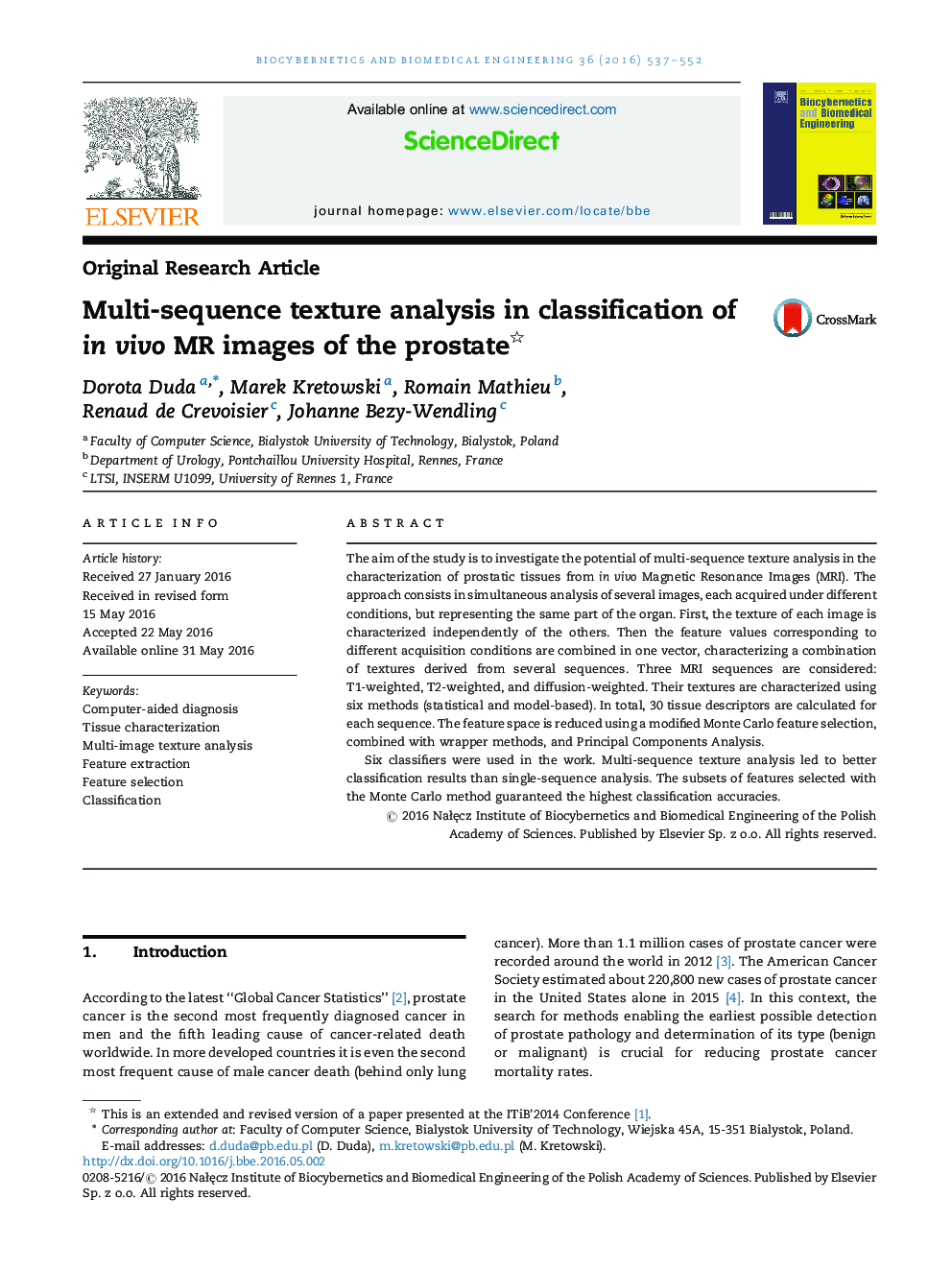| Article ID | Journal | Published Year | Pages | File Type |
|---|---|---|---|---|
| 5097 | Biocybernetics and Biomedical Engineering | 2016 | 16 Pages |
The aim of the study is to investigate the potential of multi-sequence texture analysis in the characterization of prostatic tissues from in vivo Magnetic Resonance Images (MRI). The approach consists in simultaneous analysis of several images, each acquired under different conditions, but representing the same part of the organ. First, the texture of each image is characterized independently of the others. Then the feature values corresponding to different acquisition conditions are combined in one vector, characterizing a combination of textures derived from several sequences. Three MRI sequences are considered: T1-weighted, T2-weighted, and diffusion-weighted. Their textures are characterized using six methods (statistical and model-based). In total, 30 tissue descriptors are calculated for each sequence. The feature space is reduced using a modified Monte Carlo feature selection, combined with wrapper methods, and Principal Components Analysis.Six classifiers were used in the work. Multi-sequence texture analysis led to better classification results than single-sequence analysis. The subsets of features selected with the Monte Carlo method guaranteed the highest classification accuracies.
